Ever encountered that frustrating moment when you couldn’t perfectly execute a captivating guitar lick you improvised? I’ve been there. But then, in my early years of studying music, I stumbled upon an overlooked secret; mastering scales, particularly, the B Major scale guitar. This marked the genesis of my profound transformation, but there’s much more to this journey.
The B Major scale, though often shunned due to its seemingly complex barre chord, has become my personal favourite. Why? Because I’ve discovered it’s versatility and potential to unlock a new world of musical creativity. Thus, my many years learning guitar scales and teaching others have proven to me that with a bit of dedication, the mastery of this scale is a guitar player’s game-changer.
So, I welcome you to embark on this special journey with me. A committed dive into the comprehensive guide to mastering the B Major scale on the guitar. Buckle up, it’s going to be a transformative ride.
Understanding the B major Scale
The Notes of the B Major Scale
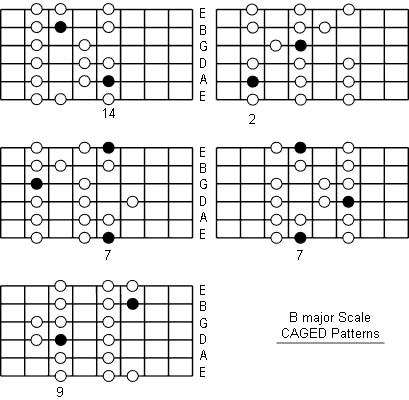
So, what are the notes of the B Major Scale? As an experienced guitar transcriber, I assure you mastering the B Major scale guitar pattern lends color to your music. Unraveling these notes, we find B as the root note, followed by C#, D#, E, F#, G#, and A#. The scale finishes off with a B note an octave higher. This series of notes contributes tonal richness unique to the B Major scale.
The understanding and application of B Major notes form the backbone of the B Major scale guitar rendition. The vibrant mix of sharpened notes widens the harmonic possibilities and paints a broader melodic picture. By working your way through each note, you reveal the scale’s inherent potential, integrating sounds that can make your music truly sing.
Being in command of the notes isn’t just about memorization; it’s about understanding their connections and interplay. The intermingling of these seven notes in the construct of a piece can give way to endless mood set-ups and tonal shifts, making your music come alive. So revisit, refresh and re-engage these notes that form the soul of the B Major scale to enhance your musical journey.
Understanding Scale Formulas

After familiarizing yourself with the notes of the B Major scale, it’s essential to understand how these notes come together to form the structure of the scale using scale formulas. These formulas, indicators of the intervals between notes, are critical in forming the foundation of any scale, including our focus – the B Major.
My work in ‘Acoustic Guitar’ magazine sharpened my ability to explain complex musical formulas in a relatable way. Today, I’ll use this expertise to decode the ways scale formulas function, specifically within the B Major scale.
B major, like all Major scales, follows the Tonic – Whole – Whole – Half – Whole – Whole – Whole – Half formula. Here, ‘Whole’ represents a whole step (two frets on a guitar), ‘Half’ indicates a half step (one fret), and ‘Tonic’ denotes the key of the scale, which is B in this case. Applying this formula ensures that you correctly understand the intervals between the notes and play the scale accurately.
This understanding of scale formulas is instrumental in forming a holistic perception of the B Major scale. With this knowledge, you’re not just blindly following the notes. Instead, you’re grasping the underlying structure that gives the scale its unique sound and character.
Remember, each Major scale follows this same formula. So mastering it will not only let you play B Major proficiently but will also be a stepping stone to understanding and playing other Major scales on the guitar.
Now that we’ve dissected the theoretical aspects, let’s dive into actually playing the B Major scale and understanding the intricate details related to its fingering and positions.
Playing the B Major Scale
Fingering and Positions
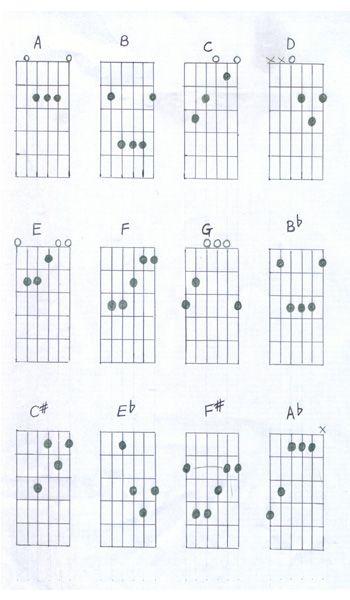
Diving deeper into the practical aspect of playing the B Major scale, let’s cast the limelight on the essential elements, B Major fingering, and positions. Coming from my years of experience, especially from insights garnered in crafting ‘Color Your Chords’, the importance of mastering these can’t be overstated.
B Major fingering is the map, guiding you on the fretboard to ensure you hit the correct notes with agility, speed, and fluidity. One simple approach that has helped hundreds of my students is starting the scale on the 7th fret of the low E string. Your index finger plays this first note, followed by your middle finger on the 9th fret, and your pinky on the 11th. The same fingering is used on the A string. On the D and G strings, you only have two notes, which are fingered with the index and ring fingers. And finally, on the B and E strings, use your index, middle, and pinky on the 7th, 9th, and 11th frets respectively.
Meanwhile, the B Major positions represent the unique combinations of the notes on the fretboard. Understanding the positions gives a robust flexibility to your scale playing, allowing you to maneuver across the fretboard with confidence. Mastering them isn’t just about mechanical recitation but in fact, understanding their application in different musical contexts.
My advice to you is to practice the fingering and positions slowly, ensuring clarity and precision. It’s not as much about speed as about accuracy and control. As with every step in our journey through the B Major scale, its mastery is a product of consistent, deliberate practice over time.
We’ve now touched on the ‘how’ of playing the B Major scale. As you take this knowledge into practice, in the next section, we will delve into scale patterns, another powerful tool to add to your musical arsenal.
Scale Patterns
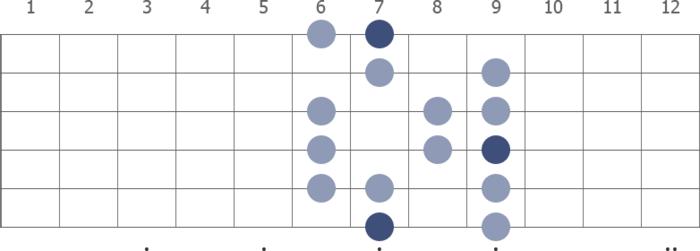
In my music career, I’ve uncovered fascinating guitar scale patterns that can transmogrify your experience playing the B Major scale, making it feel like second nature. As we delve deeper into the realm of scale patterns, your understanding and application of the B Major scale will significantly enhance.
One powerful pattern involves shifting between the first and second strings, alternating scales as you ascend and descend. This pattern not only makes the scale more melodic but also gives you increased flexibility on the fretboard. Mastering it can open doors to advanced techniques and improvisation.
Another essential scale pattern uses a sequence of thirds. Playing every other note in the scale injects a melodic leap that not only tests your dexterity but also changes the mood of the scale, giving it a distinct rhythmic character.
The beauty of scale patterns lies in their repeatability. Once you master them, they can be applied to any section of the B Major scale, regardless of your finger position. This provides more fluid transitions and allows for easy improvisation, an essential skill in performing solos or composing music.
Over the years, I’ve found that developing a repertoire of scale patterns and practicing them consistently has been beneficial to my musicianship. These patterns serve as crucial building blocks for flavorful and robust music compositions.
As we transition to understanding the theory behind the B Major scale, remember that scale patterns are more than just exercises. They are key to unlocking your potential, enhancing your improvisation skills, and helping you deliver compelling musical performances.
Unpacking the Theory

Decoding the enigmatic world of scales in music can be a daunting task; particularly grappling with the B Major scale on the guitar. It’s an intriguing puzzle, but with the right guidance, it becomes a valuable tool in your arsenal. Having earned my masters in Contemporary Improvisation, I believe the magic truly begins when you connect musical theory to practice, and really master that B Major scale. Secure in your knowledge of the underpinning theory, your fingers can weave a tapestry of sound that’s uniquely yours.
Laying the groundwork here involves breaking down the puzzle of B Major intervals. In essence, a scale is a sequence of musical intervals or steps. The stirring drama of the B Major scale comes from its unique blend of both half-step and whole-step intervals. It has a whole step from the first note—B, to the second—C#, then another whole step to D#, a half to E, whole to F#, whole to G#, whole to A#, and finally a half step brings us back to B. It’s this perfect symphony of steps that gives the B Major Scale its distinct tonal characteristics—brimming with optimism and joy.
Isn’t it intriguing how theory can inspire improvisation? Let’s unlock the secrets of the B Major scale.
To understand the B Major scale’s layout on the guitar, your mind must play tetris with the CAGED system—a concept that maps out chord shapes (C, A, G, E, and D) across the fretboard. The beauty of the CAGED system is that it allows you to visualize the fretboard in chunks, aiding in scale memorization and mastery. Apply the CAGED system to identify five distinct positions of the B Major scale across the fretboard. Trust me, the B Major scale transforms into a treasure map of rich melodic possibilities with this in hand.
Applying guitar theory to your practice might sound academic, but this knowledge is instrumental (no pun intended) in freeing your creativity. Improvisation isn’t just random notes strewn together—it’s an enlightened conversation with music. Understanding intervals, scale shapes, and positions through the CAGED system gives you a vocabulary for this conversation. Without it, you might find yourself merely repeating the same words—or in the musical sense, unhappy melodies—over and over.
I sincerely believe that the time you devote to relishing in ‘guitar theory’ pays off in the richness of your improvisation. Arming yourself with this clarity around the B Major scale doesn’t just make you a better guitar player—it becomes the sounding board for your musical expression, composition work, and unchains the limitless potential of your creative spirit.
So, there we have it—the theory behind the B Major scale, unfurled and explained. As we journey forward, we’ll delve deeper into more advanced techniques and applications of this beautiful scale. Armed with this theory, the path becomes less daunting and the potential for melodic mastery far greater.
Advanced Techniques
Enhancing Your Improvisation Skills
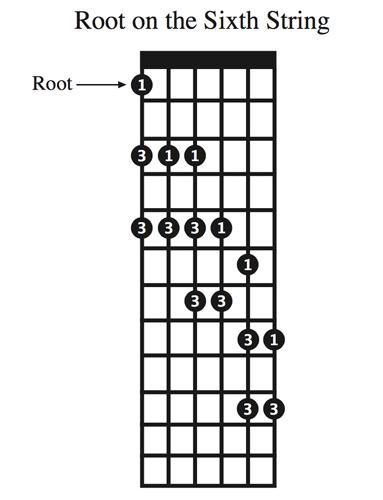
Having highlighted the core tenets of advanced techniques in our discourse on the B Major scale, let’s now delve into enhancing your improvisation skills – a vital component of guitar virtuosity. Drawing from my experience in improvisational work, I wholeheartedly attest to the potent influence of efficient improvisation on guitar soloing.
In the context of the B Major scale, enhancing your guitar improvisation involves a deeper understanding and ability to manipulate the scale’s underlying structure. Being fluent in the B Major scale patterns provides you with a robust foundation upon which substantial guitar soloing can be built. Each note should be regarded as a gateway into a new melody, offering countless possibilities and interesting directions your performance may take.
Noteworthily, spontaneous and authentic improvisation often thrives on musical interaction. Listening to others, their rhythm, phrasing and articulation, and responding to their musical ideas is often a terrific catalyst for your own creative improvisation. Imbibe melodies around you and get inspired, but remember to keep your response personal and unique.
Maintaining a delicate balance between structured technique and spontaneous creativity is crucial in guitar improvisation. The most poignant solos are often those that seamlessly synthesize envisaged patterns with spontaneous bursts of creativity. Remember, the B Major scale is just a tool – the real magic lies in how you wield it!
As we further explore the B Major scale in subsequent chapters, such as B Major Arpeggios, keep this guidance in mind. It will not only illuminate your path but also enhance your grasp of the conceptions we are to explore.
Exploring B Major Arpeggios
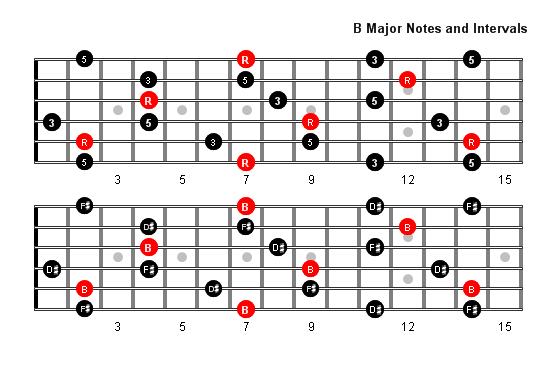
Nesting within the ‘Advanced Techniques’ chapter of our comprehensive guide, we will further delve into unearthing the potential of the B Major scale by exploring B Major arpeggios. Arpeggios define the structure of any chord and, when played over corresponding chords in a progression, they can lend a harmonious quality to your improvisations.
Contrary to simply running up and down the scale, arpeggios enable you to break it apart yet still maintain the primary tonality of B Major. Why B Major arpeggios, you ask? Being an integral part of B Major scale, these arpeggios add a dynamic flair to scale practice and improvisation. They highlight key points within your solos and can take your guitar playing to a new level of melodic sophistication. As an experienced guitarist, I believe that understanding the arpeggios within the context of their parent scale offers a liberating feeling of truly mastering that scale.
Moreover, B Major arpeggios create a pathway to delve deeply into the realm of advanced guitar techniques. They sharpen your picking accuracy, speed up your finger transitions, and enhance your understanding of scale degrees. When these factors combine, they create a powerful musical force that will aid your improvisational skills and creativity.
In the next section, we would demystify some commonly asked questions about mastering the B Major scale on guitar. However, never underestimate the role of B Major arpeggios in embedding your understanding of this wonderful scale. These arpeggios not only push you into the sphere of advanced guitar playing but also solidify your foundation of the B Major scale.
FAQs
What are the basic notes in the B major scale on guitar?
The B Major scale consists of seven notes: B, C#, D#, E, F#, G#, and A#. The B is considered the root note or the 1st note, with the remaining notes following in sequence up to the 7th note, A#. After the 7th note, the scale circles back to the root note, B.
How do I play the B major scale on the guitar?
The B Major scale is played starting from the B note at the 7th fret on the low E (6th) string. From there you follow the sequence of notes mentioned previously, making sure to play each on the correct fret and string. This may require using all four fret-hand fingers and moving from the 7th to the 9th fret to play all the notes in the scale.
What is the fingering for the B Major scale on the guitar?
The fingering for the B Major scale starting from the 7th fret on the low E string is as follows: 1st finger on the 7th fret, E (6th) string (B note), 3rd finger on 9th fret, E string (C#), 4th finger on 11th fret, E string (D#). On the A (5th) string, 1st finger plays the E note at 7th fret, 3rd finger plays F# at 9th fret and 4th finger plays G# at 11th fret. You play the A# with 1st finger on 7th fret of the D (4th) string. Then it repeats from B on the 9th fret of the 4th string.
Why is mastering the B Major scale on guitar important?
Mastering the B Major scale on the guitar is important because it is the foundation for much of Western music. Understanding this scale opens the door to playing thousands of songs, improvising solos, and composing your own music. Additionally, mastering this scale in one key will make it easier to learn and play in other keys.
Conclusion
In the course of unraveling the complexities of the B Major scale, we’ve embarked on an auditory expedition teeming with practical application, profound theory, and the joy of experimenting on your guitar. Remember that playing B Major doesn’t stop at learning the notes and scale patterns; it encompasses the textured world of arpeggios, advanced techniques, and the vast realm of improvisation.
Ready to make the B Major scale your stepping stone to becoming a complete guitarist? Immerse yourself in its varied dimensions—playing B Major offers a rich palette of possibilities that can truly refine your musicianship. I’ve always believed that understanding and mastering scales like these are the key to becoming a complete guitarist.
As you journey through this vibrant world of sound, technique, and theory, may this guide serve as a beacon, tuning your strumming fingers and training your musical ear to the magnificent tunes of B Major. Embrace the challenge and remember learning is a continuous, beautiful process. Here’s to you becoming not just a guitarist, but a complete musician. Your journey has just begun. Rock on!
